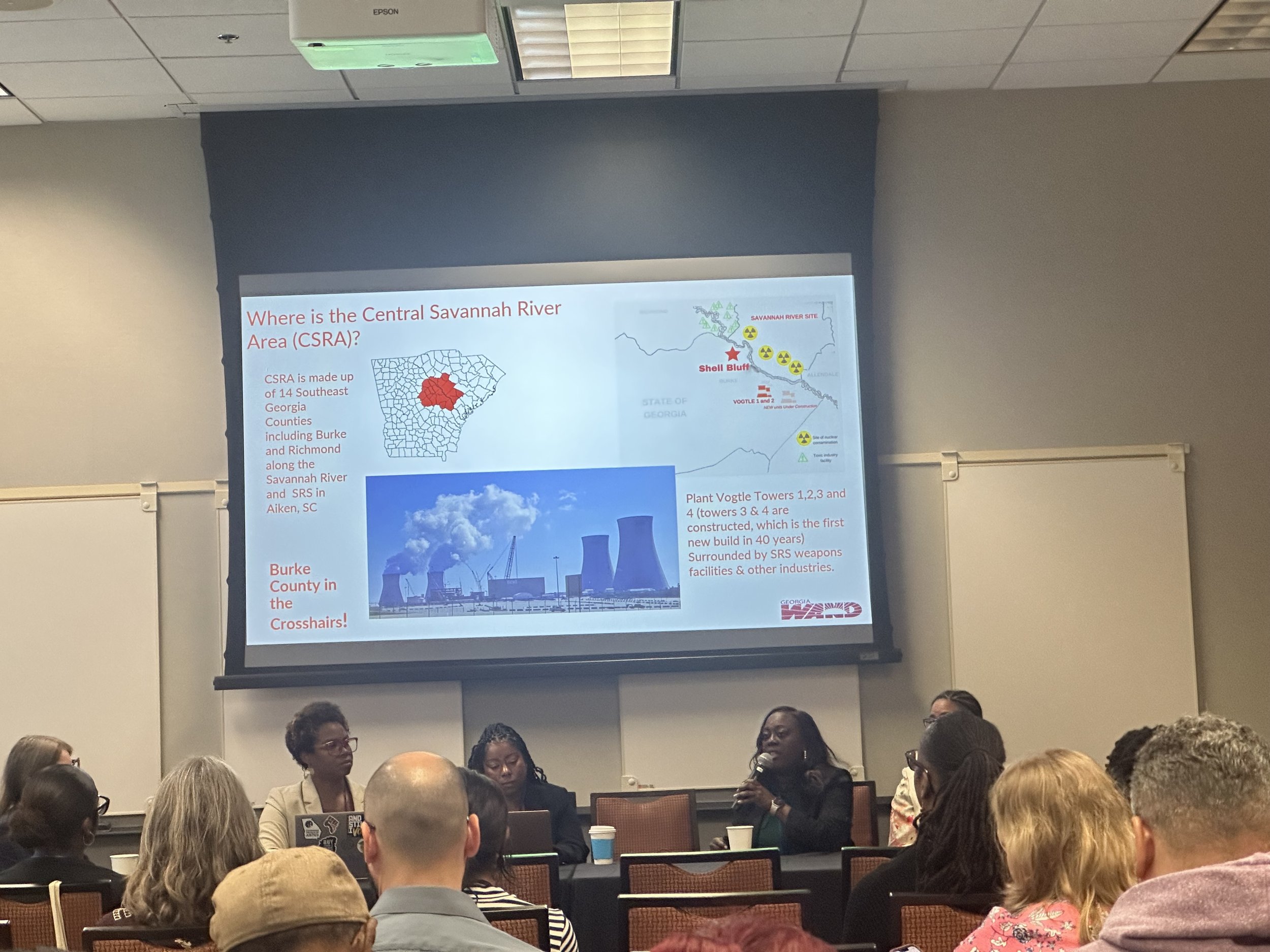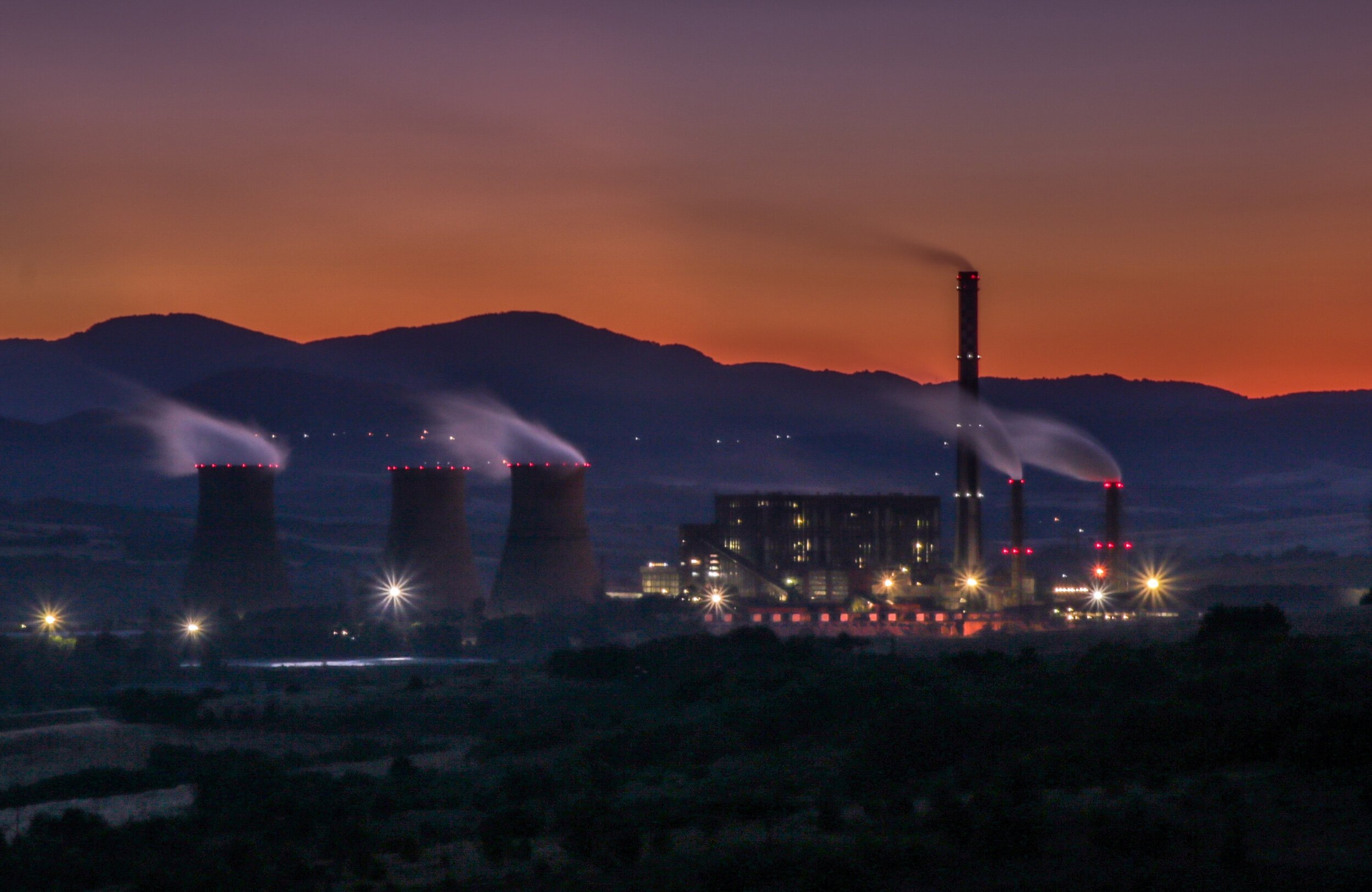

Nuclear
Georgia WAND is advancing a new model, nuclear harm reduction, the mitigation, reduction, or reversal of nuclear and environmental harms in Georgia communities.


From its inception, Georgia WAND (formerly Atlanta Women’s Action for Nuclear Disarmament) now Women’s Action for New Directions has been dedicated to the reduction of nuclear harm and the intersectionality of environmental, climate and social justice.
What do nuclear weapons have to do with Georgia?
Twenty-five miles southeast of Augusta is the Savannah River Nuclear Weapons facility, which produced nuclear weapons for the United States during the Cold War. The Savannah River Site (SRS) has been called one of the most contaminated areas on Earth. Although weapons manufacturing has ceased, the plant continues to extract tritium for the U.S. nuclear stockpile. Tritium is a by-product of nuclear energy production that emits ionizing radiation and can be released as steam from nuclear facilities. It is harmful to human health, especially in children and developing fetuses. Because of its proximity to the SRS , parts of Georgia near the river experience rainfall and groundwater contaminated with tritium.
Measuring and assessing the impacts of the contamination in the SRS on nearby Georgia residents has been difficult especially in the past due to a lack of transparency from the U.S. Department of Energy and other federal and local regulatory agencies. Residents of Burke County, and similar areas, deserve access to detailed sources of information related to the breadth of contamination. These resources must be made available to the general public so residents have the quantitative data necessary to supplement their advocacy work. Information gatekeeping is a common tool used to keep marginalized communities from being able to effectively organize against the systems that oppress them.
In addition to the issues at the SRS, there are currently two active nuclear power plants in Georgia: Hatch (Appling County) and Vogtle (Burke County). In 2008, Plant Vogtle received a contract to expand its operations with two new nuclear reactors - the first reactors to be built in the United States in 30 years since the disaster at Three Mile Island. The cost of this project has ballooned to $25 billion dollars, for a plant that will last only 40 - 50 years. These plants produce a dangerous form of energy that presents an enormous risk to the environment and human health. As we move further into the 21st century, we must prioritize safer and cheaper ways to power our future.
Learn more about the nuclear industry's impact on Georgia:
Plant Vogtle: The Truth of Nuclear Power in the United States
Georgia Nuclear Plant again delayed at cost of $200 Million More
Georgia Power begins splitting atoms inside one new Vogtle reactor
Rural georgia counties pinpointed as hotspots for death from four common cancers
Nuclear Dumps by the Riverside: Threats to the Savannah River from Radioactive Contamination at the Savannah River Site (2004)
Read Gloria Tatum’s excellent piece about Plant Vogtle and Georgia Power’s history of environmental racism: The $29 billion nuclear boondoggle that is poisoning Black communities
Op-Ed: At crucial cross-roads, nuclear plant must be stopped, Glenn Carroll, The Augusta Chronicle (2020)
Georgia regulators kick multi-billion dollar plant vogtle nuclear can down the road This blog was written by Sara Barczak, former Regional Advocacy Director with the Southern Alliance for Clean Energy, February 2019
Nuclear regulators up scrutiny of Vogtle plan, citing issues
Residents in contaminated Georgia town call for more oversight of nuclear power plant
Deadly Legacy: Savannah River site near Aiken one of the most contaminated places on earth
Here is a detailed history of the Savannah River Site from NukeWatch.
The myth that nuclear power is a “green”, renewable and sustainable source of energy has been pushed by the nuclear lobby for decades. The truth is, nuclear energy generates dangerous waste, is expensive to produce and poses significant safety and security risks.
As Georgia WAND shifts to an operating model that focuses on reducing nuclear harm, we will continue to work with Burke County to address inadequate political representation, overhaul inequitable decision-making processes, overcome white supremacy, and promote a culture that values public health, sustainability and the lives of BIPOC.


Help us lead the way
Defending People, Underserved communities, and our climate future together.

